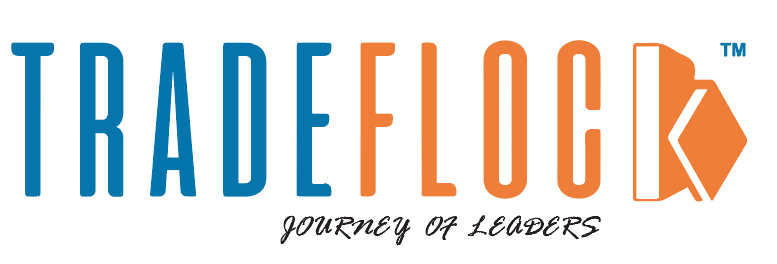According to statistics, there are more than 150 million startups worldwide, meaning more and more businesses are entering different industries, trying to find their audience and reach success. However, moving from a freelancer to a business owner can be a thrilling but daunting experience.
While freelancers appreciate the autonomy and adaptability of self-employment, broadening their work demands establishing an organized company structure. This adjustment necessitates not only shifting one’s mentality but also obtaining new expertise and utilities for managing business intricacies. Freelancers must tackle challenges like financial management and client cultivation to ensure their business thrives during this transition.
In this article, we’ll elaborate on the top five tips aspiring freelancers-turned-business-owners should keep in mind.
Table of Contents
Create a Distinctive Business Framework
If you’ve been working as a freelancer, chances are your personal and business finances have blended. But now that you’re stepping into the role of a proper business owner, it’s time to establish some clear boundaries between the two.
The first step is deciding on what type of legal structure will work best for your situation: Should you operate as a sole trader, partnership, or limited company? Each option comes with unique advantages and responsibilities, so pick one based on how well it aligns with your long-term goals.
The simplest option for numerous freelancers is to commence as a sole trader, which offers ease of operation and less administrative complexity. In this regard, investing in sole trader accounting software designed specifically for small businesses and individuals who need help with efficient finance management is a great business move. This software enables you to track income and expenses, generate invoices and taxes, and monitor cash flow in real time.
Moreover, purchasing accounting software for sole traders can not only streamline your business’s finances but also guarantee tax regulation compliance. On the contrary, setting up a limited company provides greater protection but requires more paperwork and adherence to regulatory requirements.
No matter which framework you opt for, it’s critical to formalize it legally and demarcate your finances from those of your business entity. This segregation not only safeguards your assets but also presents an explicit financial overview of your enterprise.
Consider the Operational Must-Haves of Your New Business
Moving from being a freelancer to owning a business comes with new responsibilities and operational necessities, such as managing inventory, especially in the manufacturing and clothing industry. This task may seem daunting for those unaccustomed to it and used to working independently without having stock management requirements.
However, incorporating special, AI-driven software into your system can help make this transition smoother by significantly reducing the workload involved in handling inventory. For apparel businesses, for example, investing in AI inventory management software can help them monitor stock levels continuously while also analyzing sales data and trends to predict future needs accurately, minimizing risks of either overstocking or running out of supplies (stockouts).
Moreover, AI-enabled tools automate the reordering process entirely; thus ensuring essential products never run low on supply. Integrating this type of AI solution into your inventory management practices streamlines operations, freeing up considerable time you could channel toward growing other aspects of your business instead.
Developing a Business Plan
For any freelancer seeking to become a business owner, having a meticulously crafted strategy is imperative. Though working project-by-project may have sufficed as a freelancer, leading an enterprise demands taking on more calculated measures.
By detailing your vision and goals while identifying key markets and action steps needed for success, drafting out a comprehensive business plan becomes crucial.
To begin, clarify your business goals and pinpoint the group of people you aim to reach. Comprehending the needs of your customer base is crucial in personalizing your offerings to satiate their requirements. Additionally, a strong business plan should include marketing strategies, financial projections, and an operating plan, serving as a guide to navigating entrepreneurial challenges while staying aligned with your objectives and priorities.
It’s essential that you consistently revise and update your plan so that it remains current, allowing seamless adjustments according to market alterations and enabling progress without any hindrances or obstacles impeding its journey forward.
Creating a Robust Brand Image
When you were a freelancer, your brand was probably tied closely to your name. However, as an entrepreneur in charge of a business, you must create and maintain a clear and unique brand identity.
Your brand represents how you present yourself, conveying who you are and the values that shape your work ethic and influence how clients perceive their experience working with or hiring from your company. Start by establishing your brand’s principles and the distinctive selling propositions that distinguish you from other competitors. Evaluate what makes your organization remarkable, and strategize on how best to communicate this to prospective clients.
Your brand ought to appeal positively to consumers while also mirroring the caliber of services provided consistently. What’s more, consistency is fundamental in building reputable branding; ensure every component of business operations conforms accurately with its identification framework.
Increase the Number of Your Clients
If you work as a freelancer, your business may have been reliant on just a handful of steady clients. Nonetheless, if you’re now operating as an owner of your own company, then you must diversify and broaden the pool of people who use your services. Over-reliance on one or two customers can leave any enterprise at risk from unforeseen fluctuations in workload volumes and income levels. Taking steps to expand will confer enhanced stability while opening up new growth opportunities, too.
Begin by establishing connections and cultivating rapport among professionals in your field. Participate in industry gatherings, become a member of professional organizations, and utilize social media to form ties with prospective customers. Moreover, consider providing new services or focusing on distinct markets to appeal to a broader demographic. Broadening the range of products you offer can activate alternative revenue streams while mitigating dependency on just one set of clients.
In Conclusion: Acing the Shift from a Freelancer to a Business Owner
Becoming a business owner from being a freelancer is an important move that necessitates thorough preparation and implementation. Selecting appropriate resources, such as exclusive trader accounting software, along with creating an unambiguous organizational framework can assist in establishing the sturdy groundwork for your venture. Creating a comprehensive plan of action, developing brand personality and diversifying clients are crucial to ensure sustained success.
During this conversion phase, adhere to the objectives you’ve outlined while anticipating unforeseen obstacles. Adopting the right tactics coupled with unwavering commitment will enable you to progress into operating successful establishments instead of freelancing ventures.





